(Former Florida Democratic gubernatorial candidate Bill McBride died suddenly today, December 23, 2012. It saddened me greatly as I always enjoyed interviewing him and just being in his company over the years. He and his wife, Alex Sink, were delightful people and I think I captured a moment in time with them pretty well in this profile, originally published in Florida Business/Tampa Bay, 1989.)
It’s Friday, almost 7 p.m., and Bill McBride is driving his pale blue Jaguar XJ6 — the one with the baby seat in back — to Simon Schwartz, where he’ll buy groceries to make dinner for a client who is coming by at 8 to meet his wife, Alex. She’s due in on the air shuttle from Miami any minute. That’s why he’s describing his life as one of Florida’s most influential attorneys while squeezing produce, grabbing six-packs of Amstel Light and Kirin Dry and directing the butcher to five juicy N.Y. strip steaks.
“If I’m tired, one of the reasons is our little girl has been waking up at 3 a.m. and not going back to sleep,” explains the Tampa managing partner of Holland & Knight. “And I’ve been staying up with her.”
Bill McBride and Adelaide “Alex” Sink are happily married with two young children, Bert and Lexie. They are a thoroughly modern couple.
He lives in a comfortable home in Tampa’s Palma Ceia neighborhood. She has a condominium in Coconut Grove, a suburb of Miami, because that’s where her job as a senior vice president with NCNB National Bank of Florida is. The kids — ages 20 months and 17 weeks — live in Tampa with Dad. Mom jets home to see them on the weekends.
“It’s a pretty interesting story,” says Jim Chandler, vice president of public affairs at NCNB National Bank of Florida. “They live lives in different cities and still make time to make babies.”
Commuting gained a whole new definition when Bill and Alex tied the knot three years ago. Not only do they commute to work, they commute to married life.
“Every once in a while we question whether Alex is working in Miami or in Tampa,” jokes Tamara Klinger, communications manager of the United Way of Dade County, where Sink is on the board of directors. “I think she spends most Fridays on an airplane.”
ALEX SINK: “When Bill came along … He was a professional, well established in his career and he was a Democrat. When he told me on the first date he was getting ready to go to the Democratic National Convention as a Gary Hart delegate, I thought, ‘This is the right man.’ Because I had made up my mind I wasn’t going to marry a Republican.”
The shoes of McBride, 44, and Sink, 40, are not ones in which most of us would comfortably fit. McBride is one of three managing partners at Florida’s largest law firm, Holland & Knight, where he oversees 250 lawyers. Sink is among the highest ranking women at NCNB. They see each other primarily on weekends, but sometimes in one city or another as business needs dictate.
“We have a big office down there, so I have to go down a lot,” says McBride. “And her headquarters is here in Tampa with NCNB. So we go back and forth. If we didn’t have that relationship, it wouldn’t be easy.”
“I used to read about these marriages,” says Sink, who married McBride two years ago. It is her second time around, his first. “When the idea was first being thought about, you’d read about these high-powered New York/Washington couples and you’d think, ‘How foolish!’ And now I’m in the middle of it.”
Gregg Thomas, a partner at Holland & Knight in Tampa, says the lawyer’s co-workers have a great appreciation of McBride’s unusual lifestyle. “I think it’s just accepted that she’s on a career path that’s as important as his. I think it’s neat he’s taking as much care of Bert as he does.”
The McBride/Sink courtship lasted two years and was largely based on airline schedules, a warm-up for married life. When they finally wed, the pair shared shelter for nine whole months before a promotion and better money in Miami was too good to refuse.
“Bill was going into the office Saturdays and Sunday mornings,” remembers Sink. “I would go in on Saturdays and stay late. I became convinced that when you added up the hours we spent together, it’s about the same. I never thought we would go back to commuting. I stay late in Miami so when I come (to Tampa) for the weekend I don’t have to think about work. And he does much the same thing.”
Sink oversees NCNB’s consumer banking services in Dade, Broward and Palm Beach counties. That translates into 75 bank branches, 800 employees and $2 billion in deposits.
“Her job in Miami is a good one,” says McBride. “My wife is the highest ranking woman officer in NCNB. She is on the executive committee of the Chamber of Commerce in Miami, she’s on the United Way Board of Directors. She’s a pretty formidable person in her own right. My judgement is she should continue. So for now, the babies are staying with me. (I’m) sort of Mr. Mom.”
“He has much stronger mother’s instincts than I do with our children,” says Sink. “He has different sides, but he’s very soft-hearted.” Then, believing that might be misinterpreted, she adds, “I mean, nobody’s going to accuse Bill McBride of being a wimp.”
They make an unlikely couple for more reasons than sheer geography. She is a delicate, pretty, exotic looking woman with Oriental roots (her great-grandfather was one of the original Siamese twins) who grew up in Mount Airy, North Carolina. He is a stocky, gentle man from Leesburg who went to the University of Florida on a football scholarship (a bad knee subsequently kept him from playing) and served in Vietnam with the Marines.
McBride was ready to settle down and have a family when he turned 40; Sink wasn’t.
“I wasn’t looking to get married,” she says. “After the first marriage, I made up my mind to work at my career and get financially independent. I didn’t care about having kids, so there wasn’t that pressure. When Bill came along … He was a professional, well established in his career and he was a Democrat. When he told me on the first date he was getting ready to go to the Democratic National Convention as a Gary Hart delegate, I thought, ‘This is the right man.’ Because I had made up my mind I wasn’t going to marry a Republican.
“It’s like religion,” says Sink. “My politics are very important to me. I couldn’t see myself living with someone of a different philosophy or someone who was apolitical.”
Politics are an integral part of McBride’s life and are becoming more so by the day. When Hart didn’t work out in ’84, he signed on first with Joe Biden and then Michael Dukakis in ’88. There’s still a yard sign in the garage. “I’ve always been a Democrat,” he says. “I may be the last one.” A supporter of Bob Martinez when he was the Democratic Mayor of Tampa, he has closely aligned himself to the 1990 gubernatorial hopes of Rep. Bill Nelson (D.-Melbourne), a friend since they met in Key Club while McBride was at Leesburg High School and Nelson at Melbourne High.
Nelson and McBride have a long history together. The congressman is a frequent house guest. While in Tampa, McBride fills his friend’s days and nights with meetings and social engagements to help Nelson spread his political base across Central Florida.
“When we have time together, we make the most of it,” according to Nelson. “Bill would fill every available minute with meetings — over breakfast, lunch and dinner.”
Sink has been drawn to the campaign by her husband’s friendship with Nelson. “When the guy comes and spends the night in your house about once a month for three years, you can’t help but get involved with him,” she says.
The bond between lawyer and politician is their shared goal of excellence in Florida’s future. “I think he’s the best. I give him a lot of money. I’m a fundraiser,” says McBride. “And I’m going to work on issues with him.”
“(McBride) has specific ideas about what ought to be done and the kinds of individuals that ought to do them. I went to him first, saying that I wanted to be governor,” says Nelson.
While McBride lacks an official position with the Nelson campaign, he doesn’t lack for influence. “He’s broadened my support in Hillsborough,” says the candidate, “and he’s been a help in fundraising. He has poured everything — his heart and soul — into it.”
“Bill — I call him a man of no moderation,” says Sink. “He does things 110 percent.”
But what kind of a business manager is Barrister McBride?
“I’ve never had trouble walking into his office and bitching and moaning about something going on,” says Holland & Knight partner Gregg Thomas, a media law specialist in the firm’s Tampa office. “He is the only peer who criticizes me, and I criticize him regularly. It’s a good, constructive relationship.”
Bill Nelson says you need only compare McBride’s age with his position to know how talented he is. “Bill has had an extremely rapid rise at one of the state’s most prestigious law firms. Law firms usually defer to managing partners who are very senior. And what’s Bill, 43, 44? That sort of speaks for itself.”
The partners of Holland & Knight must think a lot of McBride; they elected him in Jan. 1988 to a three-year term as a managing partner.
“I’ve worked with McBride for the last 10 years,” says Thomas. “I’m always amazed at him. I think he’s the reason we’re doing so well in Tampa. Tampa is a changing market. Through McBride’s leadership we realized we needed to reach out and find new and developing clients. He’s getting us motivated about being lawyers and being involved in our community. Being not only marketing-oriented but community-oriented has come from McBride.”
Atop the book shelves in McBride’s office sits a colorful, bearded wizard in flowing robes who has certainly worked his magicks upon the holder of the office. From his office on the 21st floor of new NCNB Building in downtown Tampa, Bill McBride balances tremendous responsibilities as a managing partner at Holland & Knight and one of several heirs to the mantle of his personal mentor and law firm founder Chesterfield Smith. That would be enough alone for most energetic men. But McBride also finds time to be a member of Nelson’s campaign for governor, a barrage of regional transportation committees and civic groups.
He is a mega-manager.
“Bill McBride is one of the most dynamic men I have ever known,” says his friend and associate on many transportation commissions, Joe McFarland, president of McFarland & Fries Financial Services. “He is really a go-getter, in spades.”
BILL McBRIDE: “When I was in the Marine Corps,” he recalls, “we’d come back from the woods in Vietnam. The number one thing we wanted to get was ice cream. One time they said they were going to get ice cream for dessert and then the freezer broke down. There was a riot.”
And don’t lose site of his responsibilities at home; the live-in nanny cares for the kids all day, but they’re McBride’s to deal with after 7 p.m.
“I work a lot,” he says. “I don’t play golf, but I’m not a nut. I do a lot of public service stuff, probably more than most people. And I have a lot of good friends that work with me. I get a lot of support from my partners. I’ll do the job at hand without too much messing around.”
Alex Sink — and no one seems to ever refer to her as Mrs. McBride — has a similar no-nonsense approach to her career. She has worked hard to rise to prominence within NCNB, starting 15 years ago as a branch planning analyst in Charlotte. That’s when NCNB only had one name — North Carolina National Bank, not NCNB of Florida, Texas, et al. At Wake Forest she studied math and married soon after graduation. Her first husband work took them to three African countries where she taught school. But the relationship soured and, after three years, Sink returned home and joined the bank at age 25.
“One advantage I had was that I was single,” she says of her advancement. “If I wanted to stay out late, I had the flexibility. If I saw ‘the boys’ were going out for pizza or beer — and provided they invited me along — I went. I didn’t have that sense of exclusion that a married young woman might. Today, I’m one of the old-timers … Maybe I’m one of ‘the boys’ now.”
As a senior vice president, she has come full circle in terms of her job focus. Sink is again responsible for finding new branches for NCNB, but she also works on increasing consumer lending and deposits, overseeing employee training and developing new products. She is on the road a lot.
“Alex has been a star for a lot of years,” says Jim Chandler. “She’s gregarious, friendly, very outgoing. She’s loaded with energy. She works probably 80 hours a week, never slows down.”
Chandler calls Sink “a member of the team,” noting an independent study by the International Leadership Center in Dallas which identified her as the second most powerful woman in Miami.
“I’ll tell you a little story,” says Chandler. “It goes back to my early days with the company. I was flying to New York with Thomas Storrs, the retired president of the bank, and Buddy Kent, who is now chairman of NCNB Texas. Storrs told Kent, ‘I just made some business calls with a lady who was the best prepared executive I’ve ever dealt with on your staff. Every ‘i’ was dotted, every ‘t’ was crossed. Her name was Alex Sink.’ That was part of the secret of Alex’s success — being recognized as good and thorough.”
Community service and involvement is a commitment stressed in the lives of both McBride and Sink. They give time and money to causes and projects they believe in. It gives them character; it is also the tie that binds them together.
“My civic work is very important to me,” says Sink. “Things like the United Way and the Chamber of Commerce are an important part of our lives.”
Ray Goode, CEO of The Babcock Co. in Coral Gables and vice chairman of public affairs for the Greater Miami Chamber of Commerce, says Sink does an “exceptional” job running the chamber’s state affairs committee. The committee is a political lobbying arm which promotes the chamber’s legislative package in Tallahassee. “She’s very knowledgeable about what’s going on in greater Miami and statewide,” according to Goode. “She has gotten to know the ‘actors,’ she knows where the sources are and knows how to work with these sources. She is a particularly relevant model to women who want to work and stay on the career path and start a family. She has proven that it can be done.”
“Alex has chosen to be a leader not only in her company but in the community,” agrees Tamara Klinger of the United Way of Dade County. “Each year, Alex has taken on a different role in the campaign and each year she comes through for us.”
As for McBride’s relentless devotion to community — he serves on the board of directors of United Way of Greater Tampa, Tampa Ballet, Tampa Downtown Partnership, Tampa Marine Institute and Tiger Bay Club of Tampa; founded the District VII Transportation Coalition and the Marion Street Transitway Coalition; works as a member of two state committees, the Gender Bias Study Commission and the Task Force on the Future of the Florida Family; and he is also chairman of a partnership conducting a human needs assessment for Hillsborough — he says that because lawyers have a legal monopoly on what they do, they have a greater responsibility than most professionals to give something back. “I trained under a lawyer — Chesterfield Smith — who said that’s how you should be. (The law) isn’t just a way to make money. You should work to make it better.
“Money has never been a motivating factor for me,” says the past-president of the Hillsborough Bar Association. “But I’ve been very lucky. I do very well — much better than I deserve. Maybe I do a lot of the free work to make myself feel better about leading such a luxurious life.”
A lot of lawyers do the same quality work. Who do you choose? Maybe the guy who gives back to the community. At least that’s the theme McBride follows. He says his motives are not entirely pure; he still has a law practice to build. But many would argue he has a hand in many more civic projects than would be necessary to impress the average citizen or corporate client.
Driving home from the grocery, McBride pulls into a drive-thru Farm Stores outlet. Being home a lot, McBride says he’s getting fat. “It’s a lack of willpower,” he says. “I like ice cream a lot. Don’t tell anyone I said so, but the best ice cream in the world is Farm Stores’. I think they pour as much sugar as they can in a carton with cream. It’s incredibly good. One of the best they have is chocolate chip.”
JOE McFARLAND: “Bill McBride is one of the most dynamic men I have ever known.”
Ice cream, of all things, reminds the lawyer of his tour of duty in Vietnam. He joined the U.S. Marine Corps in ’68 and went into the jungles as an infantry platoon commander, company commander, and combined unit commander of Marines and Vietnamese popular forces. A sword from the Marine Corps hangs proudly over the family fireplace.
“When I was in the Marine Corps,” he recalls, “we’d come back from the woods in Vietnam. The number one thing we wanted to get was ice cream. One time they said they were going to get ice cream for dessert and then the freezer broke down. There was a riot.”
At the house, the children’s nanny could probably use a cold beer, not chocolate almond ice cream. She is frazzled from hours of chasing McBride’s son around the house. “Bert’s at the stage where he wants to run all day,” says a dad who probably figures he’s got a chip off the old block.
“You know,” says Bill McBride, “the complaint I hear most from guys my age who got married early is they didn’t spend enough time with their kids. The most important thing to me up until now has been the law firm. Having children at 43 doesn’t even remotely resemble having kids at a younger age. I would not have been as good a father as I hope I’m going to be.”
There are advantages to having a spouse living 300 miles away. Think of the frequent flyer points. McBride and Sink used theirs to take a vacation in Australia last summer. While they probably won’t be able to do anything that extravagant again until the children are out of diapers, they do have a fishing boat in the Bahamas for summer vacations and long weekends.
Sink calls. Her flight is running late; she’ll probably miss dinner with the client. McBride takes it in stride. He’s bragged of his cooking prowess and will have an opportunity to practice on a business associate. That’s later; right now he’s playing with Bert, who looks like his mother, and Cheryl Alexander — “Lexie” — who looks like her mother.
“My wife calls her Lexie. I call her ‘Myrtle’ because it rhymes with ‘Bertle.’ That’s what I call Bert — Bertle the Turtle.” No one in the family, it seems, goes by their given names. McBride turns to his son, William Albert, who is coloring the daily newspaper on the coffee table with huge crayons. “Bert,” he instructs, “say, ‘E-I — E-I … ”
“O!!” shouts the little boy to his father’s glee.
Gregg Thomas, who brings his kids over to play with McBride’s, believes there are limits to the boss’s “Mr. Mom” act. Like changing diapers. “I said, ‘Bill, Bert’s got a problem with his pants. You got a diaper?’ He says, ‘No, Alex will be home in 15 minutes.’ So there are some things he doesn’t like to deal with.”
McBride goes to bed every night at 9:30, right after Bert. He wants more children; Sink doesn’t seem so inclined. “I worry a lot that I’ll be 60 and my kids will just be going to college. But I kinda accept things as they come,” she says. “On the other hand, “Five years ago, my company wasn’t prepared for women on the career-track to have children. Today we have a lot of benefits.”
The McBride/Sinks will settle on the one family, one city concept before too long. Both parents acknowledge that it’s inevitable. But where will they live? Whose career will have to give way to the best interests of the family?
“I sort of think those things take care of themselves,” says Bill McBride. “It’ll work out.”
Sidebar: Don’t Drive, He Said
Bill McBride has seized transportation as an issue very important to him. His outspoken views on mass transit solutions, outlined in the January, 1989 issue of FLORIDA BUSINESS, show him to be a supporter of innovative solutions to Tampa Bay’s stalled traffic patterns.
“He has become one of the acknowledged experts on transportation in Hillsborough County,” according to Rep. Bill Nelson.
Joe McFarland has served on many transit committees with McBride, who succeeded him as chairman of the Greater Tampa Chamber of Commerce’s Highway & Public Transportation Council in 1987. “He didn’t know the first thing about our transportation problems the first day took over our transportation council. But he’s a fast study. What he doesn’t know, he’s quick to tell you. One of the first things he perceived was that busing was in trouble. He decided we needed a group from the power structure who could be vocal.”
The result was the formation of the Marion Street Transitway Coalition, which successfully pushed for construction of a regional bus mall in downtown Tampa.
McBride is widely credited with founding the District VII Transportation Coalition, the first regional (Hillsborough, Pinellas, Hernando and Pasco counties) organization in Florida to support area transportation needs and legislation. “He perceived we needed an overall constituency for regional transportation. He was the father of it. It was his baby,” says McFarland.
The credentials don’t end there. McBride is chairman of the Citizens Advisory Council to the Metropolitan Planning Organization; a member of the Rail Transit Study Management Team; co-chairman of the Hillsborough County Transportation Financing Alternatives Committee; organizer of the Advisory Committee on Hillsborough County Transportation Concepts; member of the Tampa Interstate Study Advisory Committee; and a member of Tampa’s Transportation Finance Committee (appointed by the mayor). — Bob Andelman

Order ‘Will Eisner: A Spirited Life’ (2nd Edition) by Bob Andelman, available from Amazon.com by clicking on the book cover above!
 The Party Authority in New Jersey, Pennsylvania, Delaware and Maryland!
The Party Authority in New Jersey, Pennsylvania, Delaware and Maryland!The post A Day in the Life of Bill McBride and Alex Sink, 1989! FLORIDA BUSINESS appeared first on Andelman.com: Books and Article Archive for Bob Andelman.







![Playboy Video Centerfold/Lynne Austin [VHS] Playboy Video Centerfold/Lynne Austin [VHS]](http://ecx.images-amazon.com/images/I/21AGEU8-WVL.jpg)





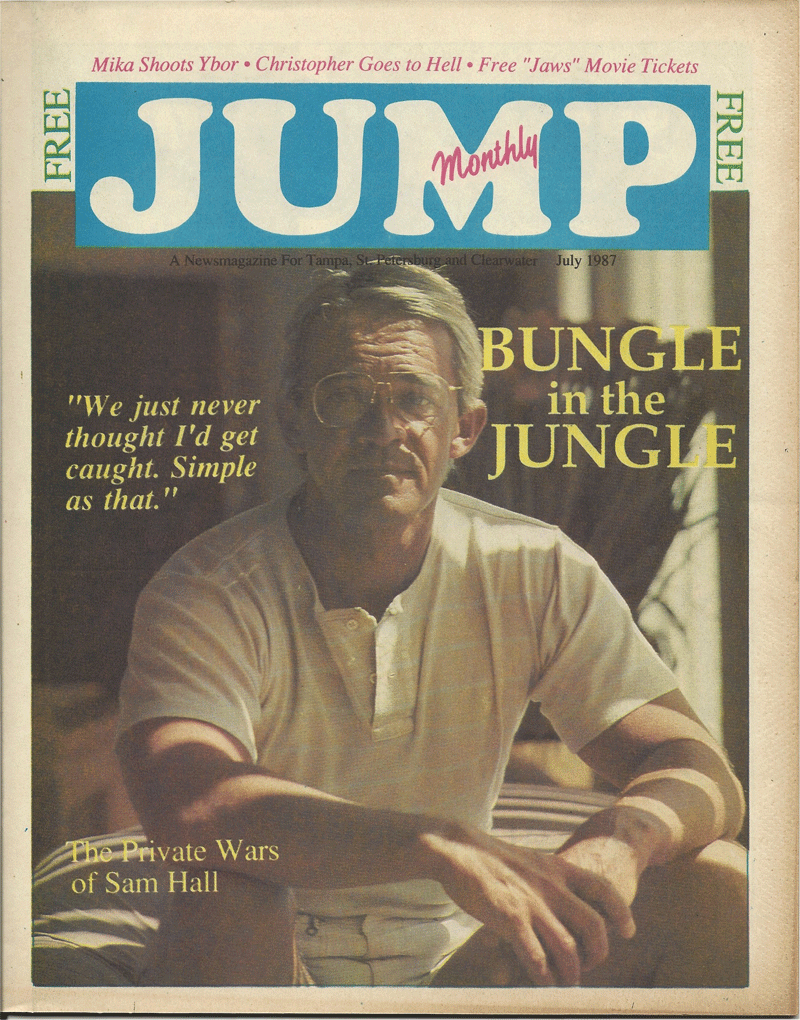
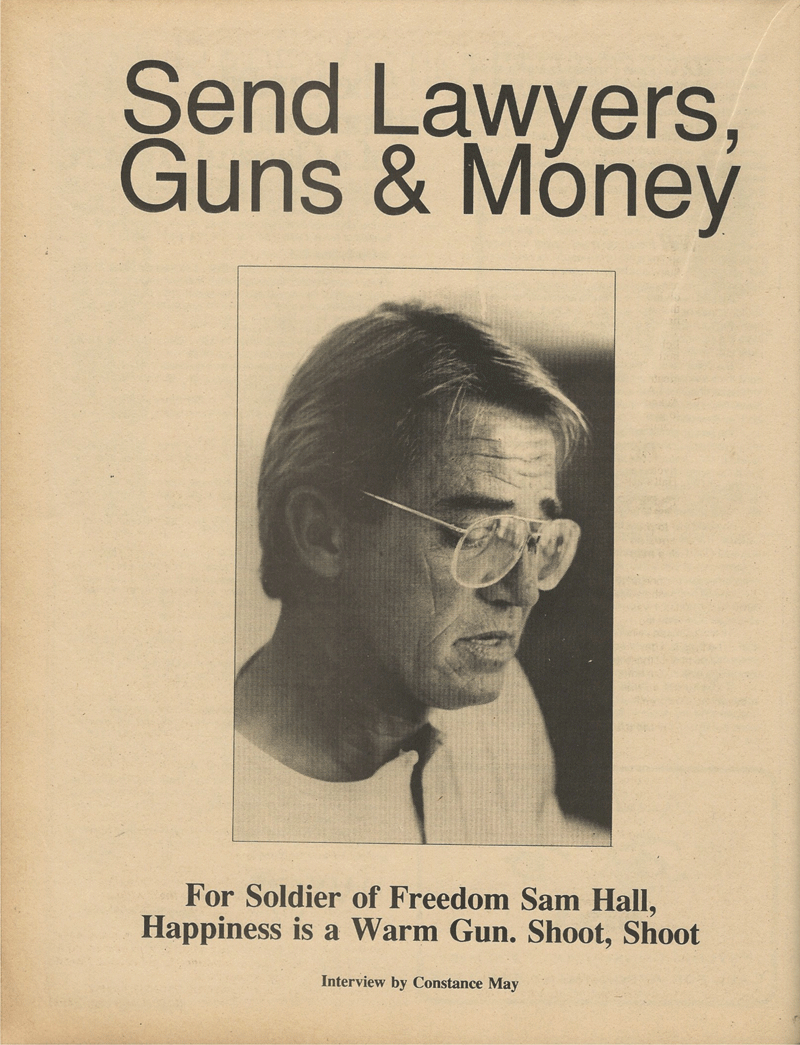
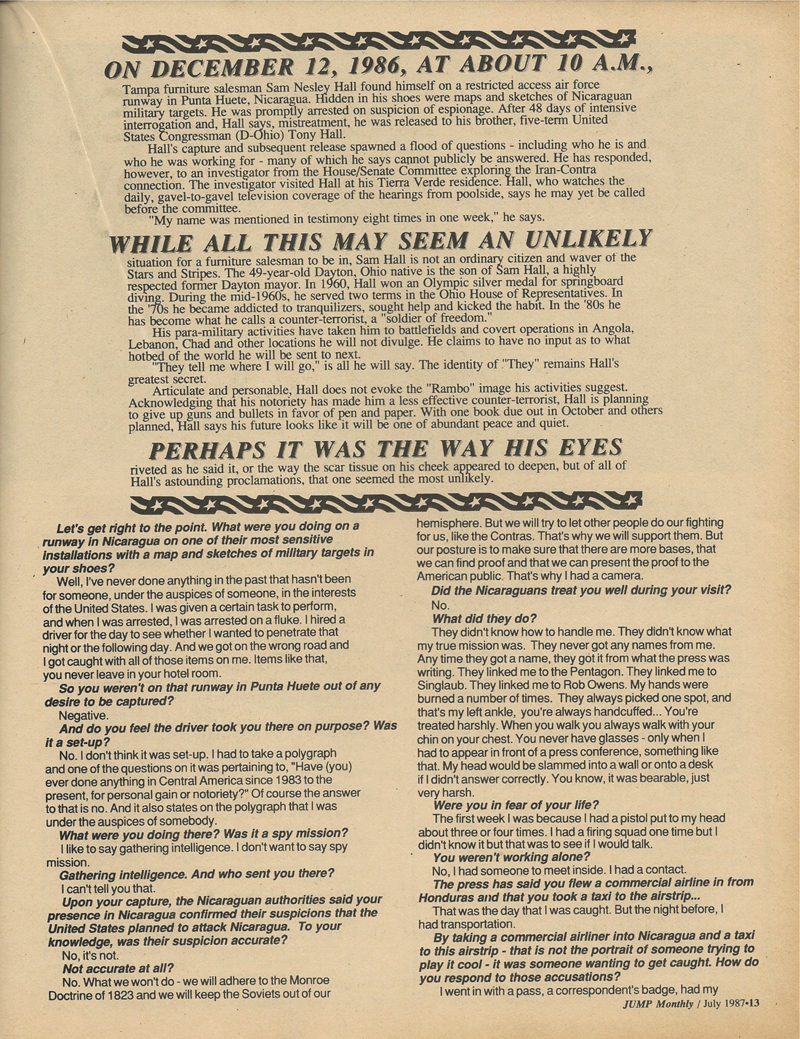
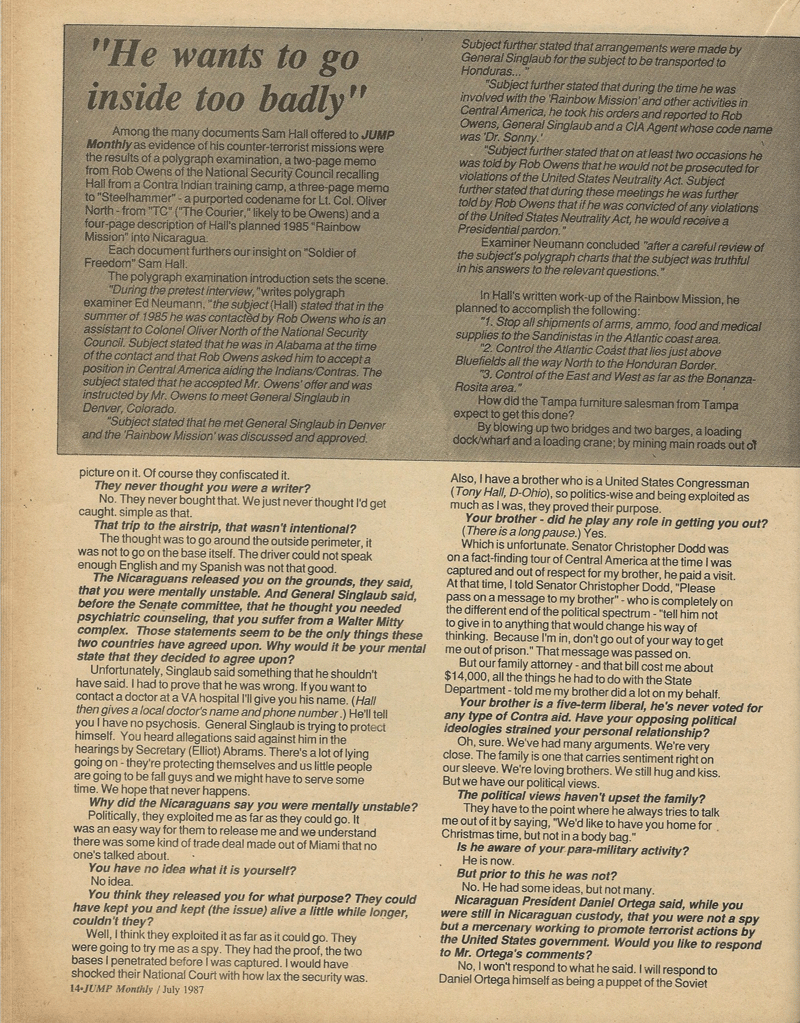
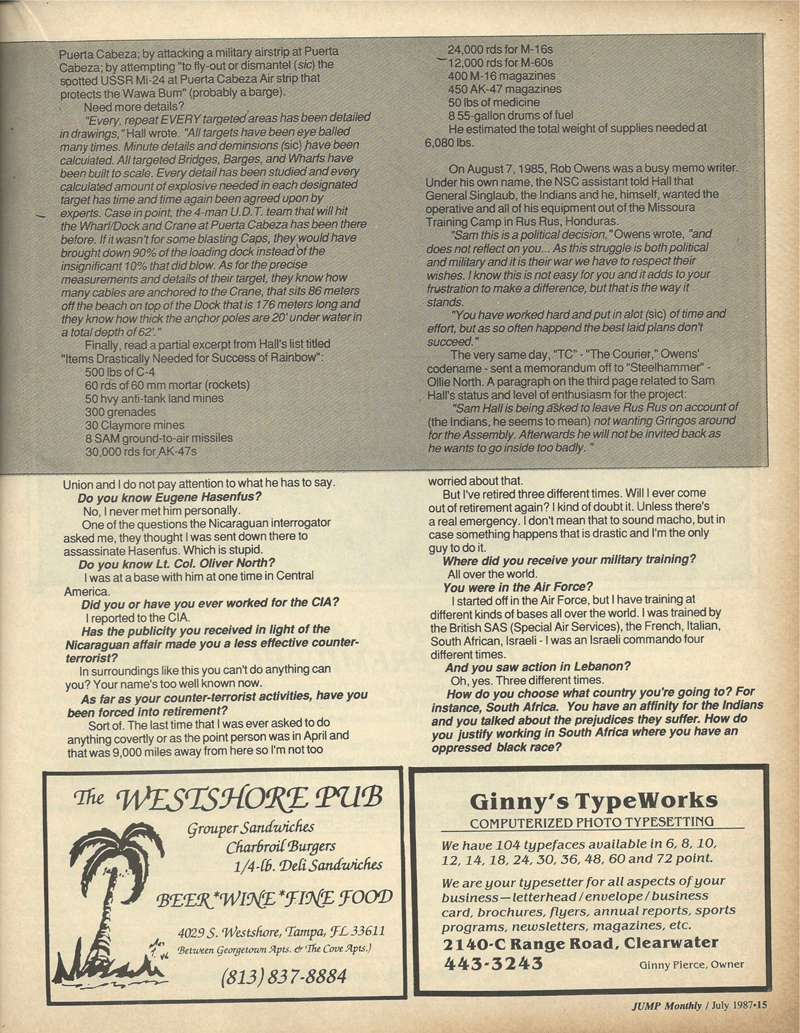
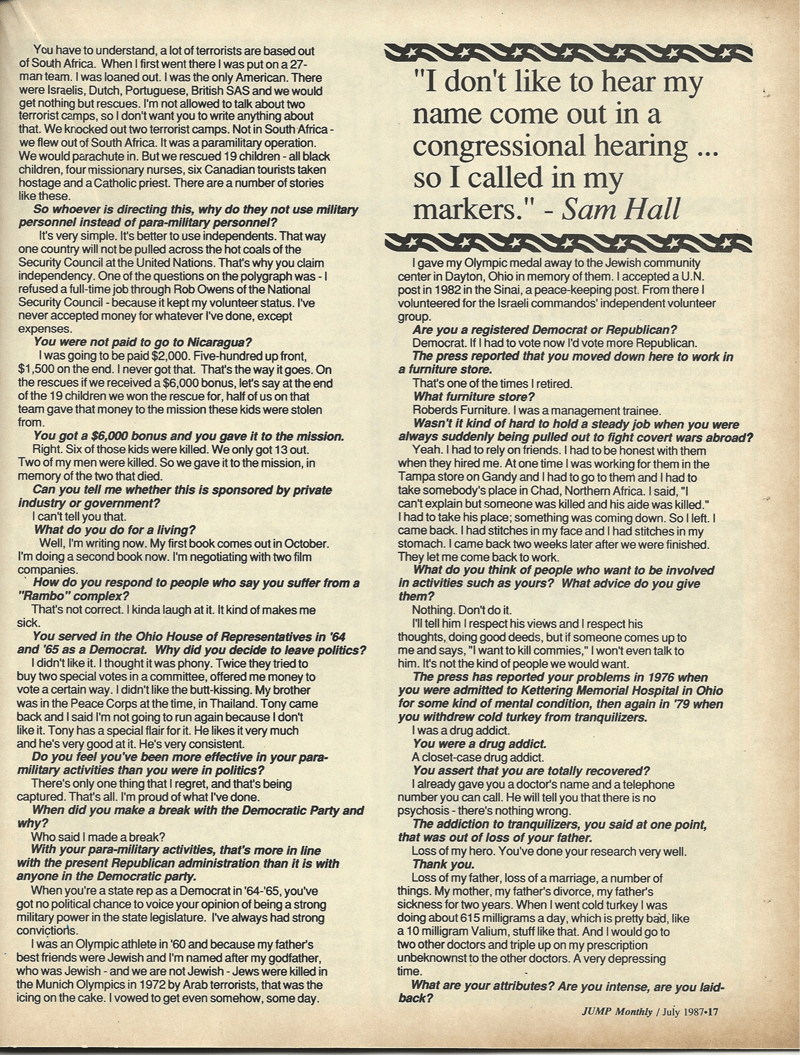
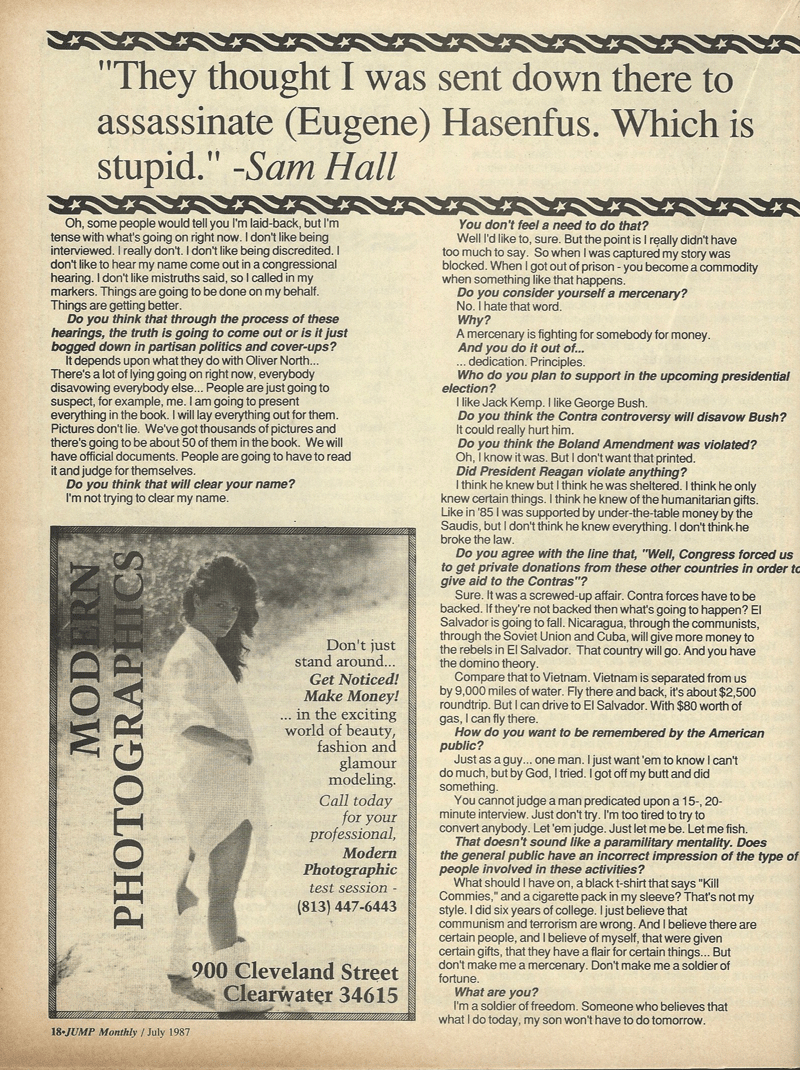


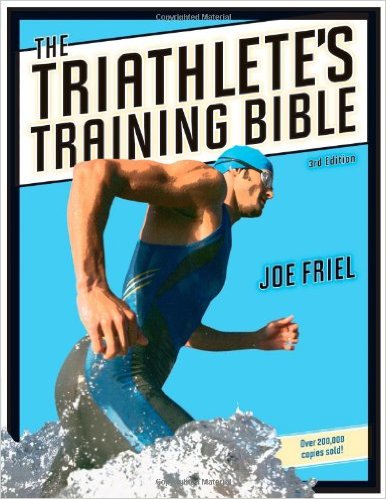

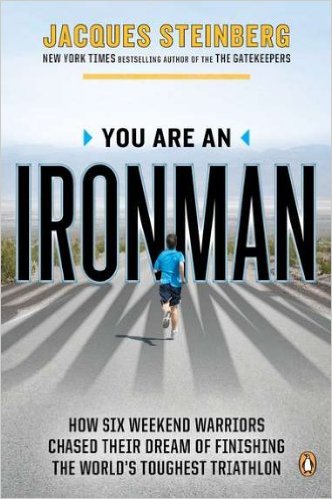
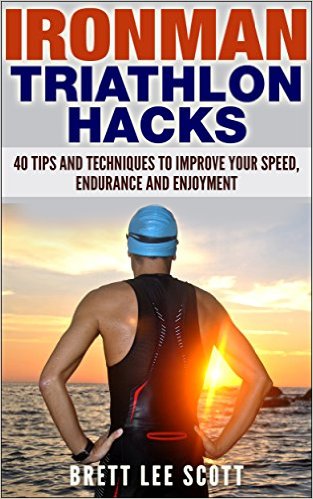


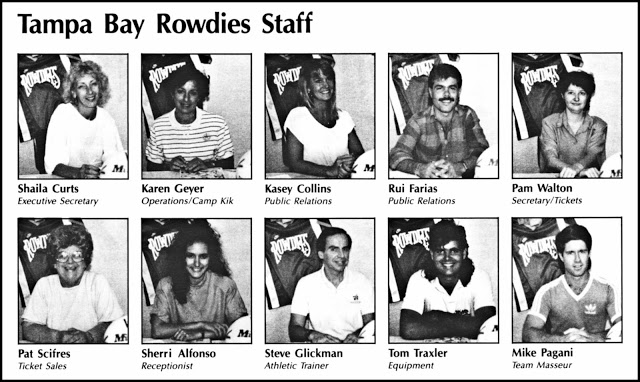

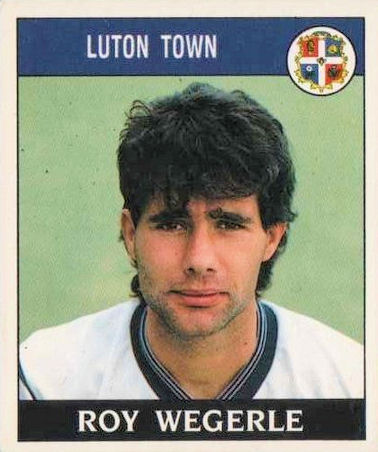
 During the Rowdies-Bolts playoff game, Coach Marsh frequently whispers to Corbett, who sits beside him, describing finer points of the action or simply expressing his frustration. After just a few minutes of observing the two, it becomes obvious that just because he is seated beside his boss and a lady at that, Marsh and his players do not weigh the invectives they sometimes spew at referees and players.
During the Rowdies-Bolts playoff game, Coach Marsh frequently whispers to Corbett, who sits beside him, describing finer points of the action or simply expressing his frustration. After just a few minutes of observing the two, it becomes obvious that just because he is seated beside his boss and a lady at that, Marsh and his players do not weigh the invectives they sometimes spew at referees and players.
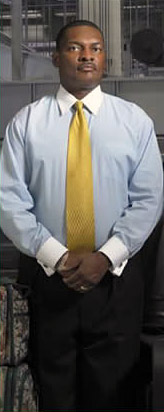

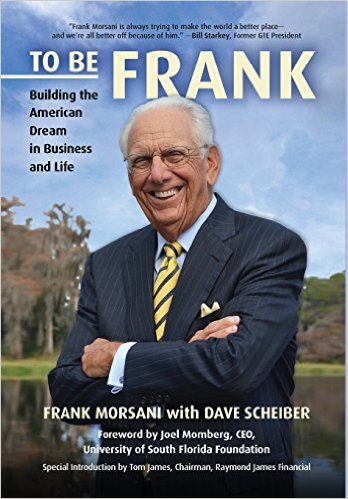


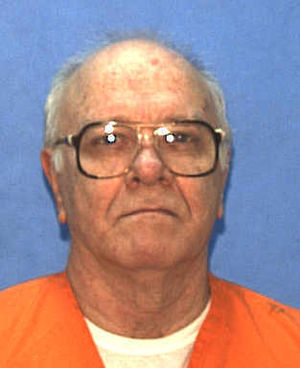
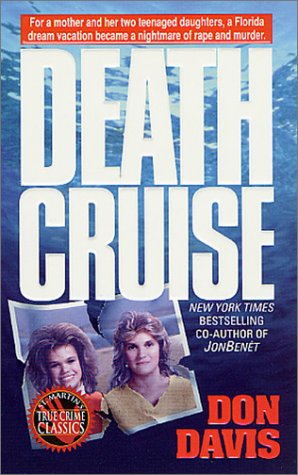






 The Party Authority in New Jersey, Pennsylvania, Delaware and Maryland!
The Party Authority in New Jersey, Pennsylvania, Delaware and Maryland!